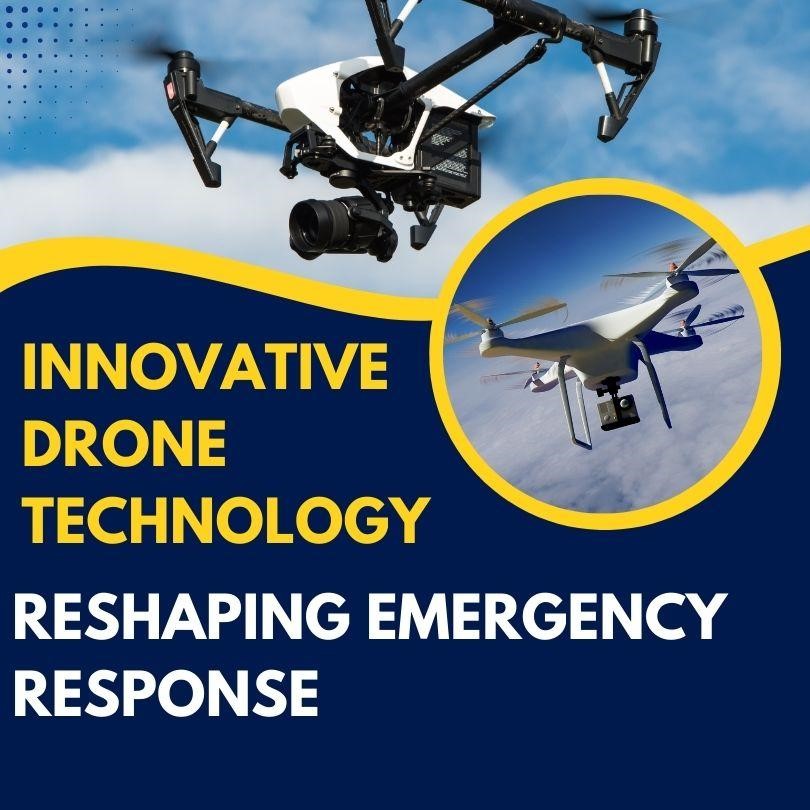Innovative Drone Technology Reshaping Emergency Response
In the modern era of technological advancement, emergency response systems are being transformed by innovations that promise to make rescue operations faster, more efficient, and more precise. One such innovation comes from Sai Deepak Talasila, whose work in drone-based image recognition offers a groundbreaking approach to search and rescue missions in remote and challenging environments.
A New Frontier in Search and Rescue
Traditional search and rescue methods often face delays due to poor visibility, vast search areas, and harsh conditions. The introduction of unmanned aerial vehicles (UAVs) with advanced image recognition capabilities directly addresses these challenges, revolutionizing rescue operations in remote locations, particularly wilderness areas where rapid response is critical. By integrating cutting-edge artificial intelligence, high-resolution cameras, and thermal imaging sensors, this system enhances the efficiency of locating and assisting individuals in distress. Drones, capable of covering large areas swiftly and accurately, are now positioned at the forefront of life-saving missions, significantly reducing the time required to find stranded or injured individuals.
Drone Fleet with Multi-Terrain Capabilities
One of the key innovations in this system is the diverse fleet of drones designed to operate in various terrains and weather conditions, combining fixed-wing and multi-rotor drones to optimize search coverage and precision. Fixed-wing drones can quickly scan wide areas, while multi-rotor drones excel in detailed inspections and targeted supply deliveries. Equipped with modular payload systems, these drones can carry essential emergency supplies such as food, water, and medical kits, significantly improving survival chances for those awaiting rescue. This adaptability is crucial in environments where traditional transport methods are ineffective or unavailable.
Sophisticated Image Recognition Systems
At the heart of this innovation lies an advanced image recognition system designed to detect humans and signs of distress in real-time. Utilizing both RGB and thermal cameras, the drones can operate in various lighting and weather conditions, ensuring no rescue opportunity is missed. Powered by state-of-the-art AI accelerators, the onboard processing units enable image processing at the edge, reducing delays that could be critical in life-or-death situations. Machine learning algorithms, trained on diverse datasets, accurately identify human figures, distress signals, and potential injuries based on body posture, allowing rescue efforts to be prioritized based on the severity of the situation.
Overcoming Challenges with Innovation
While the benefits of drone-assisted search and rescue are evident, several technical challenges, such as false positives, adverse weather conditions, and limited battery life, must be addressed to ensure system reliability. To tackle these issues, the innovation integrates solutions that enhance detection accuracy, weather resilience, and operational endurance. By employing an ensemble of object detection algorithms and cross-referencing results, the system minimizes false positives, preventing wasted resources. Additionally, weather-resistant drones equipped with real-time meteorological data integration allow for continued operation in harsh conditions. Battery optimization strategies, including switching between long-endurance fixed-wing drones and agile multi-rotor drones, ensure continuous coverage. Ongoing research into alternative power sources, like solar panels and hydrogen fuel cells, further promises to extend flight times in future iterations.
A Seamless Operational Workflow
The operational workflow of this drone-based system is a well-orchestrated process that begins with the detection of distress signals, either through personal locator beacons or satellite-based systems, providing the initial coordinates for the search. Once the mission planning software analyzes terrain data, weather forecasts, and known information about the missing individual, drones are deployed to cover large search areas. As the drones capture high-resolution images and thermal scans, the data is transmitted in real-time to a centralized ground control station for analysis. Upon detecting a human figure or distress signals, the drones are immediately dispatched to deliver essential supplies while awaiting the arrival of human rescue teams. This streamlined process ensures that critical time is saved, and human intervention is expedited only when necessary, significantly increasing the chances of a successful rescue.
In conclusion, the future of emergency response is bright, with drone-based image recognition systems playing a crucial role in wilderness rescues. As technology advances, improvements in autonomous systems, real-time processing, and AI-driven decision-making will enhance the effectiveness of these innovations. Sai Deepak Talasila‘s work in developing these systems highlights the significant potential of technology to save lives. As they become more widespread, search and rescue operations will be faster and more efficient, ensuring timely assistance for those in need.

